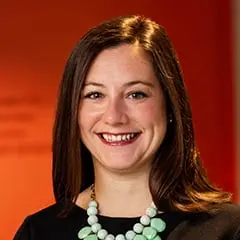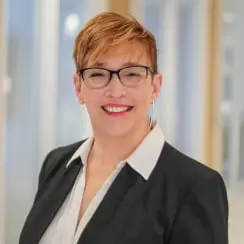 | 1 LU / HSW |
 | 1 LU / HSW |
For decades, school districts engaged in long-range planning with a facilities first mindset — allocating funds based solely on facility condition and capacity. This injudicious approach led to historically marginalized neighborhoods facing inequitable experiences and opportunities. DLR Group is collaborating with school districts across the nation to rewrite the script with an equity lens that spotlights traditionally underserved student populations and stabilizes learning opportunities across whole communities. This novel approach creates institutional accountability for equitable student outcomes across a district. Geographic Information Systems (GIS) equips our teams with real-time data at a neighborhood scale for analysis of economic, social, and environmental conditions within school districts and the communities they serve. Pairing the data with direct community engagement surfaces root causes and the lived experiences of students and their families. For Austin ISD, the eighth largest school district in Texas, this newfound approach resulted in actively disrupting problems perpetuated by the typical master planning process and creating a holistic long-range plan utilizing an Equity by Design process. Our session will highlight how shifting the power of decision-making to the community and focusing on the lived experiences of the historically underserved allow for true disruption to break the cycle of inequity. When School District U-46, the second-largest PK-12 school district in Illinois, set out to develop an Educational Facility Master Plan to address current and future facility needs, district leaders embarked on a multi-faceted approach to ensure equity for all. Their process went beyond looking at the physical condition of a district’s facilities and incorporated geospatial data analysis using GIS mapping for a holistic look across the district.
Learning Objectives:

Korey is a talented architect and educational planner with a passion for research and a critical eye for detail. She co-leads DLR Group's educational facilities planning team. In this role, she applies her dual master’s degrees in architecture and urban and regional planning from the University of Colorado Denver to an interdisciplinary approach that creates meaningful outcomes for her clients and the community. Korey empowers high-performing teams to produce innovative and memorable projects.

As Executive Director of Planning and Asset Management, Beth oversees bond planning, real estate, long-term master planning and the development of the district’s educational specifications for the Austin Independent School District. She has served on the district’s planning team for the past fifteen years and spearheaded the development of the Long-range Plan, which informed the $2.44 billion 2022 bond program. She also coordinates districtwide demographic updates and the district’s property acquisition and disposal strategy.

Brian serves as the Chief of Staff and is responsible for the day-to-day implementation and assessment of progress of the initiatives in School District U-46. He is responsible for monitoring the work of cross-functional teams charged with the work of aligning all instructional and operational systems to support the academic success of all students. He also serves as a member of the Superintendent’s Cabinet advising district leadership regarding current and future issues.
This track focuses on Resiliency and addresses how learning environments support the development of students and communities that have the strength and flexibility to withstand adversity and adapt to change. The COVID-19 pandemic demonstrated the essential role that schools have in stabilizing communities during a time of crisis. How do schools support the development of strong community culture among teachers and students? How do schools foster physical and mental health and wellness to ensure all are ready and supported to learn? How do we create learning environments that are strong in intent yet adaptable to change? How do we learn from what does not work and further, learn to take risks daily to expand our comfort zone? What can we learn from research and our responses to past events to inform how to build toward a resilient future where we can withstand what crises and challenges the future brings? Topic areas, seen through the lenses of both Art and Science, include sustainability, physical and mental health, community, school climate and culture, safety, and security.
Primary Core Competency
Educational Facility Pre-Design Planning: Manages a master planning process that combines educational planning, facilities assessment and utilization, demographic research, capital planning and educational specifications with a community-based vision to establish a plan for learning environments. This includes the ability to translate existing or aspirational instructional models to specific programming and spatial relationships.